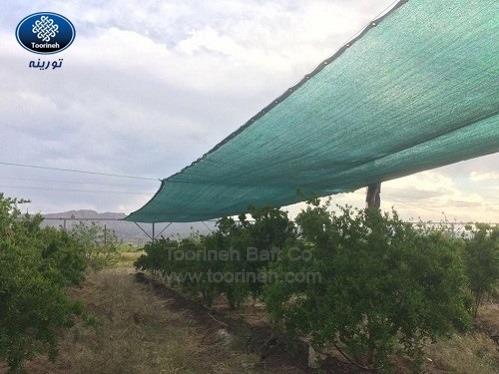
Protective nets (Shade nets) in horticultural productions - part 2
The following essay includes the second section of Dr. Kavousi’s researches about shade net effect as part2:
Quantity of light
Quantity of light or light intensity is the amount of light (lumens) falling on a surface (over any given square foot or square meter). Therefore, light intensity is measured in terms of lumens per square foot (footcandles) or lumens per square meter (lux). In most parts of Iran, the light intensity is sufficient, but sometimes it’s much more than plant needs. On most sunny days the light intensity reaches 10’000 footcandles. Light intensity affects the photosynthesis process.
Quality of light
Plants respond differently affected by different lights. For example, green light prevents the plant from photosynthesizing, while red and blue lights cause the most photosynthesis.
Blue and purple lights are necessary to make apples red or to make eggplants purple (this is the reason why the color does not form under the eggplant stem). For flowering, red light and infrared spectrum are needed.
Duration of radiation
The amount of light reaches in different parts of the earth depends on the duration and the angle of the radiation. Due to the roundness of the earth, sunlight shines at different angles at different times of the day. The duration of radiation (photoperiod), has a direct effect on the growth and flowering of many plants. For photosynthesis, different plants need different light intensity. Therefore plants are divided into different groups:
- Shade-loving plants, like indoor ornamental plants (Ficus, fern, etc.)
- Full sun plants, such as Rose, Chrysanthemum, etc.
- Half shade half sun plants, like ornamental plants (Solenostemon, Begonia, Cyclamnia, etc.)
- Insensitive plants, like Magnolia
To be continued..
Опубликовано: 17:27:46 1400/10/16
Посетил: 2305
Посетил: 2305



